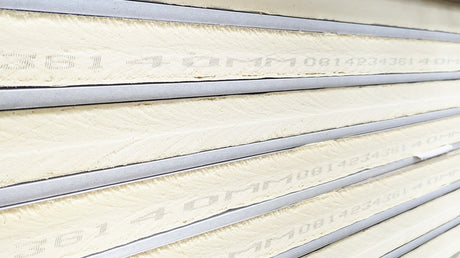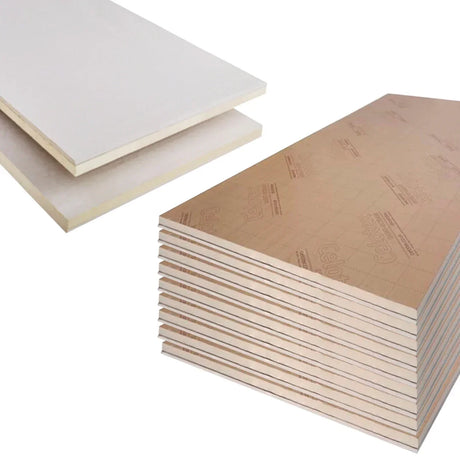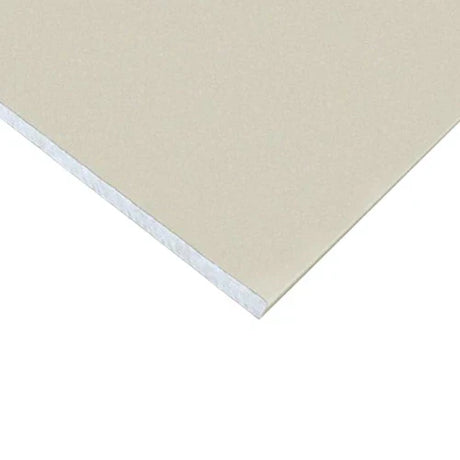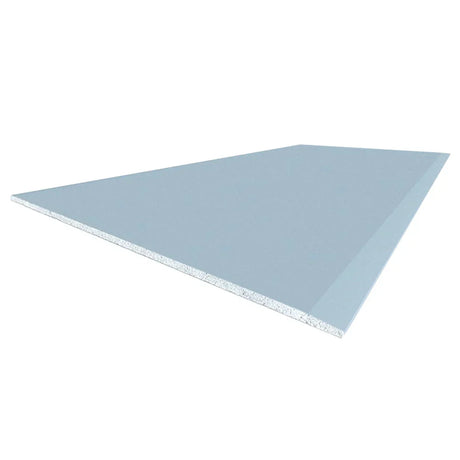When you're standing in a timber yard or browsing online for sheet materials, the array of plywood options can feel overwhelming. You know you need plywood for your project, but should you choose structural or marine grade? The decision might seem straightforward, but selecting the wrong type can lead to costly mistakes, project delays, and disappointing results that could have been easily avoided.
At DIY Building Supplies, we've seen countless customers struggle with this very decision. After years of supplying premium sheet materials to both DIY enthusiasts and trade professionals across the UK, we've developed this comprehensive guide to help you navigate the complexities of plywood selection. Whether you're a weekend warrior tackling your first major project or a seasoned tradesperson seeking clarity on specifications, understanding the fundamental differences between structural and marine plywood will save you time, money, and frustration.
The stakes of getting this decision right extend far beyond your immediate project. Choose structural plywood for a bathroom renovation, and you might face delamination and structural failure within months. Opt for expensive marine grade when standard structural would suffice, and you've unnecessarily inflated your project costs. This guide will equip you with the knowledge to make informed decisions that align with your specific requirements, ensuring your project stands the test of time whilst staying within budget.
Understanding Structural Plywood: The Backbone of British Construction
Structural plywood represents the workhorse of the construction industry, engineered specifically to bear loads and provide the framework that keeps buildings safe and sound. This isn't simply wood glued together; it's a sophisticated engineered material where multiple layers of wood veneers are carefully oriented and bonded with high-strength adhesives to create exceptional strength-to-weight ratios. The cross-grain construction, where each veneer layer runs perpendicular to the adjacent ones, distributes loads evenly and prevents the splitting and warping that plague solid timber.
In the UK market, leading manufacturers like West Fraser, Norbord, and James Jones & Sons produce structural plywood to exacting CE2+ standards, ensuring consistent quality that meets British and European structural requirements. These sheets undergo rigorous testing for bending strength, modulus of elasticity, and formaldehyde emissions, guaranteeing they'll perform reliably in demanding applications. The grading system provides clear guidance on suitability, with markings that indicate load-bearing capacity and moisture resistance levels.
The manufacturing process itself speaks to the precision required for structural applications. Premium softwood veneers, typically from sustainably managed Scandinavian forests, are precision-cut to exact tolerances before being assembled with phenolic or urea-formaldehyde adhesives under carefully controlled pressure and temperature conditions. This process creates panels with predictable engineering properties that structural engineers can confidently specify in their calculations, making structural plywood an indispensable component in modern timber frame construction.
Primary Applications for Structural Plywood:
Structural plywood excels in load-bearing applications where strength and dimensional stability are paramount. In flooring applications, 18mm or 22mm structural grade sheets provide the solid foundation needed for both domestic and commercial installations. The material's ability to span significant distances between joists whilst maintaining flatness makes it ideal for creating strong, squeak-free floors that will perform reliably for decades. Many UK housebuilders specify structural plywood exclusively for flooring in timber frame constructions, recognising its superior performance compared to particleboard alternatives.
Wall sheathing represents another critical application where structural plywood demonstrates its value. When properly installed as part of a timber frame system, structural plywood provides essential racking resistance that keeps buildings square and stable under wind loads. The material's consistent strength properties allow structural engineers to calculate precise load paths, ensuring buildings meet stringent British standards for safety and performance. Modern building control departments increasingly favour structural plywood sheathing for its predictable performance characteristics and excellent moisture vapour permeability when specified with appropriate membranes.
Roofing applications showcase structural plywood's versatility in challenging environments. Whether supporting traditional slate, modern metal systems, or innovative green roof installations, structural plywood decking provides the stable platform essential for long-term weather protection. The material's dimensional stability prevents the movement that can compromise roofing membrane integrity, whilst its smooth surface facilitates proper installation of underlayments and finishing materials. Many roofing contractors prefer structural plywood for complex roof geometries where cutting and shaping requirements demand material that won't delaminate or lose strength when worked.
Marine Plywood: Engineered for the Harshest Environments
Marine plywood represents the pinnacle of moisture-resistant sheet materials, specifically engineered to withstand the punishing conditions that would quickly destroy standard structural grades. This isn't merely structural plywood with better glue; it's a fundamentally different product designed from the ground up to resist delamination, fungal attack, and dimensional instability in perpetually damp conditions. The manufacturing process employs only the highest grade veneers, completely free from knots, splits, and core voids that could provide entry points for moisture.
British Standard BS 1088, the gold standard for marine plywood in the UK, sets exacting requirements that go far beyond simple moisture resistance. Sheets must demonstrate exceptional resistance to delamination after extended boiling tests, whilst maintaining structural integrity under cyclical wetting and drying conditions that simulate years of marine exposure. Leading UK suppliers like Robbins Timber and Meyer Timber source marine plywood from manufacturers who exceed these standards, ensuring every sheet meets the demanding requirements of professional boatbuilders and marine engineers.
The adhesive technology employed in marine plywood manufacturing represents decades of development in waterproof bonding systems. Phenolic resin adhesives, cured under precise temperature and pressure conditions, create bonds that are actually stronger when wet than when dry. This counterintuitive property ensures that marine plywood actually improves its structural performance in the high-moisture conditions that would destroy conventional materials. The resin system also provides natural resistance to fungal and bacterial attack, eliminating the biological degradation that commonly affects standard plywoods in damp conditions.
Core Quality and Construction Standards:
The veneer selection process for marine plywood demands perfection that would be considered excessive for structural applications. Each veneer layer undergoes individual inspection, with any sheets containing knots, splits, or grain irregularities rejected before assembly. The core construction employs solid wood veneers throughout, eliminating the composite core materials sometimes found in structural grades. This solid wood construction ensures consistent strength properties whilst eliminating the potential weak points that moisture could exploit over time.
Manufacturing tolerances for marine plywood are significantly tighter than those for structural grades, with thickness variations limited to ±0.2mm across the sheet surface. This precision ensures predictable performance in critical applications where dimensional stability is paramount. The surface quality achieves furniture-grade standards straight from the press, often eliminating the need for additional surface preparation before finishing. These exacting standards result in a material that commands premium pricing but delivers unmatched performance in demanding applications.
The edge sealing and finishing characteristics of marine plywood reflect its intended use in exposed conditions. Unlike structural plywood, which often requires edge sealing before exposure to moisture, marine plywood maintains its integrity even with cut edges exposed to water. This property proves invaluable in applications where perfect edge sealing is difficult to achieve or maintain over time, providing a safety margin that protects against moisture intrusion through minor installation imperfections.
Critical Differences That Determine Your Choice
Understanding the fundamental differences between structural and marine plywood extends beyond simple moisture resistance to encompass adhesive chemistry, quality standards, and performance expectations that directly impact project success. The adhesive systems represent the most critical distinction, with structural plywood typically employing water-resistant formulations that provide excellent performance in controlled moisture conditions but can fail under prolonged exposure to high humidity or direct water contact.
Adhesive Technology and Bonding Performance:
Structural plywood commonly utilises phenol-formaldehyde adhesives that achieve Weather and Boil Proof (WBP) classification under BS EN 314 standards. These adhesives provide excellent strength and moisture resistance for most construction applications, maintaining structural integrity through normal service conditions including occasional wetting and drying cycles. However, the adhesive chemistry wasn't designed for continuous moisture exposure, and prolonged contact with water can eventually lead to bond-line degradation and delamination.
Marine plywood employs advanced phenolic resin systems specifically formulated for permanent moisture exposure. These adhesives actually cure to higher strength levels than their structural counterparts, creating bonds that maintain integrity even under continuous immersion conditions. The curing process involves higher temperatures and pressures, resulting in a more complete chemical cross-linking that resists hydrolysis and biological attack. This superior adhesive technology explains much of the cost premium associated with marine grades but provides the performance assurance essential for critical applications.
Quality Standards and Core Construction:
The veneer quality standards between structural and marine grades represent a significant performance differentiator that extends beyond aesthetic considerations. Structural plywood permits certain levels of core gaps, face repairs, and grain irregularities that would be unacceptable in marine applications. These defects, whilst not compromising structural performance in dry conditions, can become pathways for moisture ingress and subsequent delamination in challenging environments.
Marine plywood mandates solid core construction with minimal gaps between veneer layers, eliminating the void spaces where moisture could accumulate and biological degradation could begin. The veneer grading system ensures consistent density throughout the sheet thickness, providing predictable strength properties and eliminating weak zones that could compromise performance under stress. This attention to core quality results in sheets that maintain their properties even when cut, drilled, or shaped during installation, providing consistent performance regardless of how the material is worked.
Long-term Durability and Maintenance Requirements:
The service life expectations for structural versus marine plywood in moisture-exposed applications differ dramatically, with properly installed marine plywood often outlasting structural alternatives by decades. Structural plywood in protected applications can provide excellent service for the design life of most buildings, but exposure to persistent moisture can reduce this dramatically through delamination and biological attack. Marine plywood, conversely, is designed to maintain its properties indefinitely when properly installed and maintained, making it cost-effective for critical applications despite higher initial costs.
Maintenance requirements also differ significantly between the two grades. Structural plywood typically requires regular inspection and resealing when used in moisture-exposed applications, with edge sealing being particularly critical for long-term performance. Marine plywood's superior edge stability and moisture resistance reduce maintenance requirements substantially, often requiring only basic cleaning and occasional refinishing to maintain optimal performance throughout its service life.
Selecting the Right Grade for Your Specific Application
The decision between structural and marine plywood ultimately depends on understanding your specific application requirements and matching them to the appropriate material characteristics. This decision-making process requires honest assessment of moisture exposure levels, structural requirements, and long-term performance expectations balanced against budget constraints and availability considerations.
When Structural Plywood Excels:
Structural plywood represents the optimal choice for the majority of construction applications where its engineering properties meet performance requirements whilst providing excellent value. In flooring applications, particularly in controlled internal environments, structural plywood delivers the strength and dimensional stability needed for long-term performance at a fraction of marine grade costs. The material's consistent engineering properties make it ideal for load-bearing applications where predictable performance is essential but moisture exposure remains minimal.
Wall sheathing and internal structural applications showcase structural plywood's strengths in providing essential building performance whilst maintaining cost-effectiveness. Modern timber frame construction relies heavily on structural plywood's ability to provide racking resistance and load distribution whilst maintaining excellent vapour permeability when properly detailed. The material integrates seamlessly with contemporary insulation systems and building membranes, creating high-performance building envelopes that meet current energy efficiency standards.
Furniture construction and joinery applications often favour structural plywood for its excellent working properties and surface quality. The material cuts cleanly, accepts fastenings reliably, and provides stable surfaces for veneering or laminating. Many professional cabinet makers prefer structural plywood for carcass construction, reserving marine grades only for applications where moisture exposure is unavoidable. This approach optimises both performance and cost whilst ensuring appropriate material selection for each application.
Marine Plywood Applications:
Marine plywood becomes essential when moisture exposure exceeds the capabilities of structural grades or when failure consequences are unacceptable. Bathroom and kitchen applications, particularly around shower enclosures and sink areas, benefit enormously from marine plywood's superior moisture resistance. The material's ability to maintain structural integrity even with occasional wetting makes it ideal for tiling substrates and wet room construction where traditional materials would quickly delaminate.
External applications require careful consideration of exposure conditions and protection systems. Marine plywood can provide excellent performance in external joinery applications when properly detailed and protected, offering superior durability compared to structural alternatives. Garden building construction, particularly for structures like summerhouses and workshops, often justifies marine plywood specification for its ability to withstand the humidity fluctuations and occasional water exposure common in these applications.
Specialist applications including boat building, marine furniture, and industrial uses where chemical or moisture exposure is unavoidable represent the core market for marine plywood. These applications demand the superior performance characteristics that justify the material's premium pricing, with failure consequences often far exceeding the additional material costs. Professional boat builders and marine engineers specify marine plywood exclusively for critical applications, recognising that substituting inferior materials represents false economy in demanding service conditions.
Professional Installation Techniques and Best Practices
Successful plywood installation requires understanding not just which grade to select, but how to work with each material to achieve optimal performance. Both structural and marine plywoods have specific handling and installation requirements that, when properly followed, ensure long-term success and maximum service life from your investment.
Storage and Handling Considerations:
Proper storage begins before your plywood arrives on site, with preparation of clean, dry storage areas essential for maintaining material condition. Plywood sheets should always be stored flat on level supports spaced no more than 600mm apart, preventing sagging that could introduce permanent deformation. The storage area must provide protection from direct rainfall whilst allowing air circulation to prevent condensation accumulation that could affect adhesive bonds or promote fungal growth.
Handling procedures require particular attention to edge protection, as damaged edges can compromise both structural performance and moisture resistance. Professional installers always use proper lifting techniques with sufficient personnel to prevent bending stresses that could cause delamination, particularly important with larger format sheets. Marine plywood, despite its superior construction, remains vulnerable to impact damage during handling, making careful site management essential for maintaining material integrity throughout the installation process.
Cutting and Machining Techniques:
The cutting and machining of plywood requires specific techniques to achieve clean edges whilst preventing delamination and tear-out that could compromise performance. Circular saws should employ fine-toothed blades with minimal set to achieve clean cuts, whilst backing up cuts with sacrificial material prevents exit tear-out that could provide moisture entry points. Router work demands particularly sharp cutters and appropriate feed rates to prevent burning that could weaken adhesive bonds along cut edges.
Edge preparation becomes critical for both structural and marine applications, with proper sealing essential for long-term performance in moisture-exposed conditions. Structural plywood edges require thorough sealing with appropriate primers before exposure to any moisture, whilst marine plywood benefits from edge sealing even though its superior construction provides inherent protection. Quality sealers like those from Sika or Sadolin provide excellent edge protection when properly applied according to manufacturer specifications.
Fastening and Fixing Systems:
The selection of appropriate fastening systems can significantly impact long-term performance, particularly in moisture-exposed applications where corrosion could compromise structural integrity. Stainless steel fixings represent the gold standard for marine plywood applications, with 316 grade stainless providing optimal corrosion resistance in the most demanding conditions. For structural applications in protected environments, quality zinc-plated or galvanised fixings provide excellent performance at more economical cost levels.
Pilot hole requirements differ between structural and marine applications, with marine plywood's denser construction often requiring pre-drilling to prevent splitting whilst achieving optimal holding power. The fixing pattern and spacing must accommodate the material's thermal movement characteristics, particularly important in large format installations where seasonal expansion and contraction could introduce stress concentrations. Professional installers always follow manufacturer recommendations for fixing patterns whilst considering local exposure conditions and load requirements.
Maximising Performance Through Proper Finishing
The finishing systems applied to plywood installations play a crucial role in both appearance and long-term durability, particularly in applications where moisture exposure is anticipated. Understanding how different finishing systems interact with structural and marine plywoods ensures optimal performance whilst achieving the desired aesthetic results.
Surface Preparation and Priming:
Surface preparation requirements vary significantly between structural and marine plywoods, with each grade requiring specific approaches to achieve optimal finishing results. Structural plywood often requires more extensive surface preparation due to potential core telegraphing and surface irregularities, whilst marine plywood's superior surface quality typically requires only light sanding before priming. The sanding process should progress through appropriate grit sequences, avoiding aggressive grits that could damage surface veneers or create scratches that telegraph through subsequent finishes.
Priming systems must be selected based on the specific plywood grade and intended service conditions, with primer compatibility being crucial for long-term performance. Alkyd-based primers provide excellent adhesion and sealing properties for most interior applications, whilst acrylic systems offer superior flexibility and moisture resistance for challenging environments. Marine applications often benefit from two-pack epoxy primers that provide exceptional adhesion and moisture barrier properties, though these systems require careful application procedures and appropriate environmental conditions for optimal curing.
Protective Coating Systems:
The selection of topcoat systems should consider both aesthetic requirements and performance expectations, with different coating technologies offering specific advantages for various applications. Polyurethane systems provide excellent durability and chemical resistance for high-wear applications, whilst maintaining good appearance retention under UV exposure. Acrylic systems offer excellent colour stability and ease of maintenance for applications where frequent recoating might be necessary.
For external applications, the coating system must provide comprehensive protection against UV degradation, moisture penetration, and thermal cycling that could compromise substrate integrity. Modern microporous coatings allow vapour transmission whilst preventing liquid water penetration, providing optimal protection for external joinery applications. These systems require regular maintenance but offer superior long-term protection compared to conventional film-forming coatings that can trap moisture and promote substrate degradation.
Cost Considerations and Value Engineering
Understanding the true cost implications of structural versus marine plywood extends beyond simple material pricing to encompass installation costs, maintenance requirements, and service life expectations. This comprehensive cost analysis ensures optimal material selection that balances initial investment against long-term value and performance requirements.
Initial Cost Analysis:
Marine plywood typically commands a premium of 40-60% over equivalent structural grades, reflecting the superior materials and manufacturing processes required for its enhanced performance characteristics. However, this cost differential must be evaluated against the specific application requirements and consequences of premature failure. In critical applications where moisture exposure is unavoidable, the additional cost of marine plywood often represents insurance against costly remedial work and potential structural damage.
The installation cost implications also warrant consideration, as marine plywood's superior working properties can actually reduce installation time and labour costs in demanding applications. The material's dimensional stability and resistance to splitting can eliminate the need for complex edge sealing procedures required with structural grades, whilst its superior surface quality may reduce finishing requirements. These factors can partially offset the higher material costs whilst providing improved reliability and performance.
Long-term Value Considerations:
Service life expectations provide the most compelling argument for marine plywood in appropriate applications, with properly installed marine grades often lasting 2-3 times longer than structural alternatives in moisture-exposed conditions. This extended service life must be evaluated against the costs of premature replacement, including not just material costs but also disruption, decoration, and potential consequential damage from moisture-related failures.
Maintenance cost differentials also favour marine plywood in demanding applications, with reduced maintenance frequency and simpler maintenance procedures providing ongoing cost savings throughout the material's service life. The superior edge stability and moisture resistance of marine grades often eliminate the need for regular resealing and inspection required with structural alternatives, reducing lifetime ownership costs whilst improving reliability.
Why Choose DIY Building Supplies for Your Plywood Requirements
At DIY Building Supplies, our commitment to providing premium sheet materials extends far beyond simply stocking products to encompass comprehensive technical support and expert guidance that ensures optimal outcomes for every project. Our relationships with leading UK manufacturers like West Fraser, Norbord, and specialist marine plywood suppliers ensure access to the highest quality materials whilst maintaining competitive pricing that provides exceptional value for both trade and DIY customers.
Our technical expertise, developed through years of supporting projects ranging from simple furniture construction to complex marine applications, enables us to provide specific recommendations tailored to your project requirements. We understand that selecting the right plywood grade can make the difference between project success and costly failure, which is why our team takes time to understand your specific needs before making recommendations. This consultative approach ensures you receive not just quality materials but also the knowledge needed to use them effectively.
Comprehensive Support Services:
Our support extends throughout your project lifecycle, from initial material selection through to installation guidance and finishing recommendations. We maintain detailed technical data on all our plywood grades, including specific performance characteristics, installation requirements, and compatibility with various finishing systems. This information proves invaluable for both professional tradespeople seeking specification data and DIY enthusiasts wanting to understand material capabilities and limitations.
Quality assurance remains paramount in our material selection process, with rigorous inspection procedures ensuring every sheet meets or exceeds manufacturer specifications before leaving our facilities. Our storage and handling procedures maintain material condition throughout the supply chain, ensuring you receive plywood in optimal condition ready for immediate installation. This attention to quality control eliminates the frustration of discovering material defects during critical project phases whilst ensuring optimal performance from your investment.
The breadth of our sheet material range ensures availability of appropriate grades for virtually any application, from basic structural requirements through to specialist marine applications requiring BS 1088 certification. Our inventory management systems maintain stock levels that ensure availability when you need materials, whilst our logistics network provides reliable delivery across mainland UK. This comprehensive service approach positions DIY Building Supplies as your single source for premium plywood requirements backed by expert technical support.
Conclusion: Making the Right Choice for Your Project Success
The decision between structural and marine plywood ultimately determines not just your project's immediate success but its long-term performance and value. Understanding the fundamental differences between these materials – from adhesive chemistry and core construction through to performance characteristics and service life expectations – empowers you to make informed decisions that align material properties with application requirements.
Structural plywood excels in the vast majority of construction applications where its engineering properties provide excellent performance whilst maintaining cost-effectiveness. Its consistent strength characteristics, dimensional stability, and excellent working properties make it the logical choice for flooring, wall sheathing, and internal structural applications where moisture exposure remains controlled. For these applications, specifying marine plywood would represent unnecessary expense without meaningful performance benefits.
Marine plywood becomes essential when moisture exposure exceeds structural grade capabilities or when failure consequences are unacceptable. Its superior adhesive technology, core construction, and moisture resistance justify the cost premium in applications including bathrooms, external joinery, and marine construction where reliability in challenging conditions is paramount. Understanding these application boundaries ensures optimal material selection that balances performance requirements against cost considerations.
The expertise and support available through DIY Building Supplies transforms material selection from a potential source of confusion into a confident decision-making process. Our comprehensive range of premium plywood grades, combined with expert technical guidance and quality assurance procedures, ensures you receive not just materials but complete solutions tailored to your specific requirements.
Ready to Start Your Project?
Discover our comprehensive range of structural and marine plywood grades, backed by expert technical support and competitive pricing that provides exceptional value for your investment. Whether you're planning a simple furniture project or complex structural application, our team stands ready to provide the materials and guidance needed for optimal results.
Visit our Sheet Materials Collection to explore our full range of premium plywood grades, or contact our technical team for specific guidance on your project requirements. At DIY Building Supplies, we don't just supply materials – we provide complete solutions that ensure your project's success from initial planning through to final completion.
Contact our expert team today on 0115 838 0600 or email info@diybuildingsupplies.co.uk for personalised guidance on selecting the perfect plywood grade for your specific project requirements.









